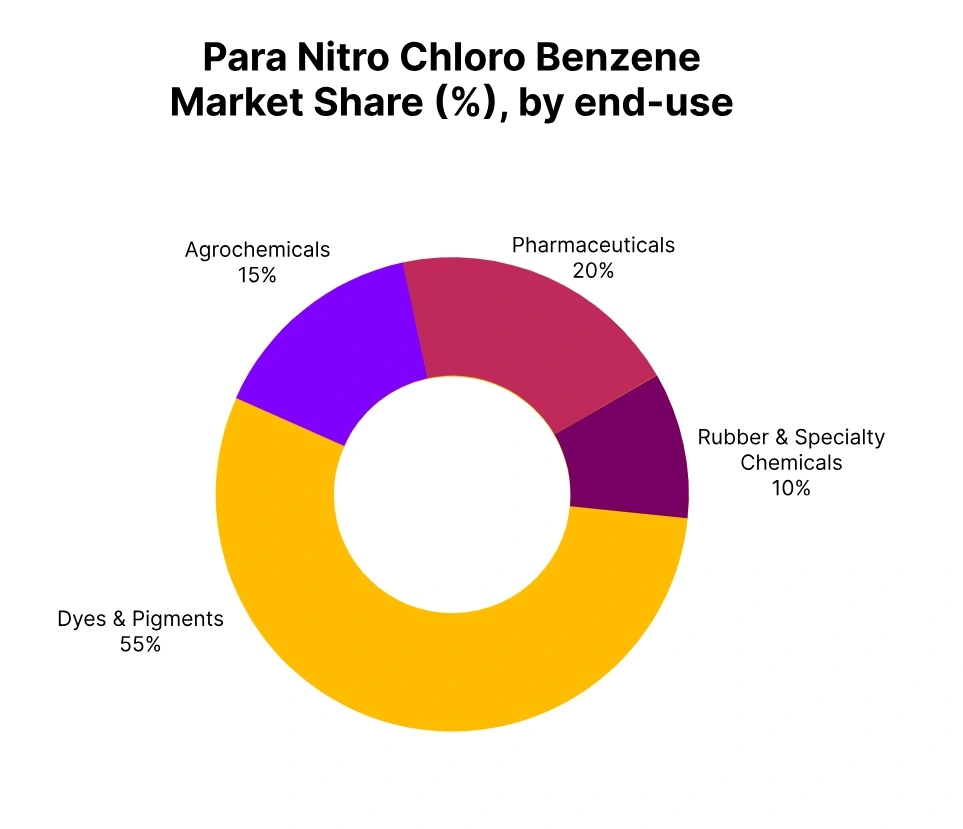Price-Watch’s most active coverage of Para Nitro Chloro Benzene (PNCB) price assessment:
- Industrial Grade (>99%) FOB Shanghai, China
- Industrial Grade (>99%) CIF Nhava Sheva (China), India
- Industrial Grade (>99%) Ex-Mumbai, India
Para Nitro Chloro Benzene (PNCB) Price Trend Q3 2025
In Q3 2025, the global Para Nitro Chloro Benzene (PNCB) market witnessed a stable to slightly bearish outlook, shaped by steady freight conditions, consistent feedstock availability, particularly Chlorobenzene and Nitric Acid, and cautious buying interest across key regions. While import activity into South Asia remained active under CIF terms, export demand from China showed signs of moderation due to sufficient inventory levels and softer overseas inquiries.
Manufacturers maintained balanced production rates to avoid stock accumulation, contributing to overall market stability. The para nitro chloro benzene (PNCB) price trend reflected regional dynamics, with pricing pressure observed in some markets, while others remained supported by steady consumption and logistical efficiency.
China
Para nitro chloro benzene (PNCB) Export prices FOB Shanghai, China, Industrial Grade (>99%).
In Q3 2025, The Para Nitro Chloro Benzene prices trend in China showed a noticeable decline driven by weaker procurement activity and sufficient domestic inventories. Downstream industries were caution in bulk purchases, as consistent availability of feedstocks like Chlorobenzene and Nitric Acid kept production costs under control. Despite steady production rates by local manufacturers, limited export momentum influenced overall pricing sentiment.
The PNCB price trend in China dropped by 8.33%, with FOB prices assessed in the range of USD 815–940 per metric ton. Inquiries remained quiet as buyers monitored global trends and awaited direction on price recovery. In September 2025 Para Nitro Chloro Benzene (PNCB) prices reflecting a decline of 7.29% from the previous month. The fall in offered prices was largely driven by subdued international inquiries as global buyers showed reduced interest amid high inventory levels.
India
Para Nitro Chloro Benzene Import prices CIF Nhava Sheva, India, Industrial Grade (>99%).
In Q3 2025, The Para nitro chloro benzene (PNCB) prices trend in India under CIF Nhava Sheva terms from China to India remained firm, putting slight pressure on import cost assessments. The Para Nitro Chloro Benzene price trend in India showed a slight decline, supported by steady demand from downstream sectors and consistent offtake.
The number of inquiries remained stable across the quarter, specifically from traders maintaining balanced inventory levels. Although domestic supply was adequate, Indian buyers continued to rely on imports to meet flexible sourcing needs.
According to PriceWatch, the PNCB price trend in India fell by -3.00%, with CIF prices ranging between USD 885–970 per metric ton. FOB offers from China were competitively priced, helping maintain a stable trade flow into Indian ports. In September 2025 Para Nitro Chloro Benzene (PNCB) prices decreasing by 4.31% monthly. The decline in offered prices originated from a softer FOB trend in India, where spot availability remained sufficient to cater to both domestic and export requirements.


